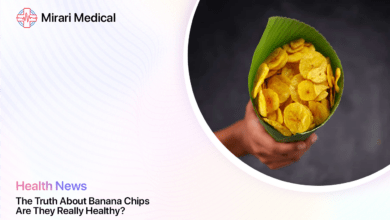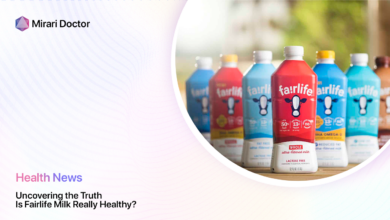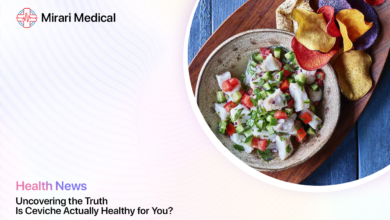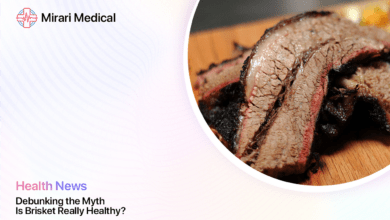Are Chobani Flips a Healthy Snack Option?
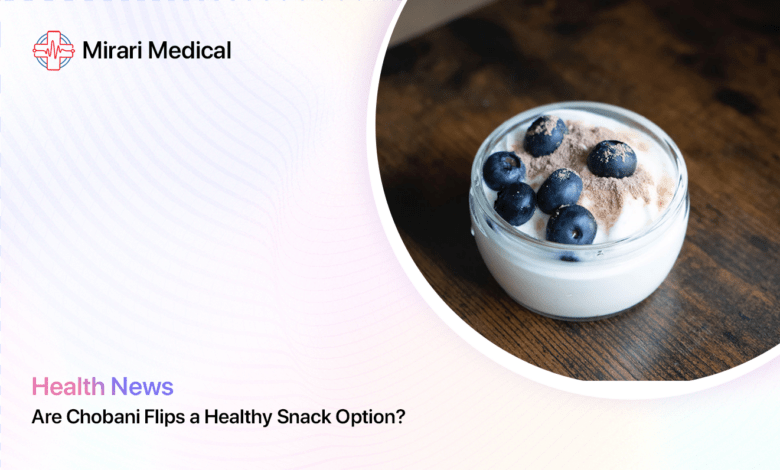
You may be interested
Did you know that the average American consumes nearly 23 pounds of yogurt per year?[1] With the rise of Greek yogurt’s popularity in recent years, that number is likely even higher today. Among the many Greek yogurt options on the market, Chobani Flips have gained a devoted following for their unique combination of creamy yogurt and crunchy mix-ins in indulgent flavors. But are these snacks really a healthy choice? In this comprehensive article, we’ll take a closer look at the ingredients, nutrition facts, and potential health impacts of Chobani Flips to help you decide whether they deserve a place in your healthy eating plan.
What Are Chobani Flips?
Chobani Flips are a line of single-serve Greek yogurt cups that feature a compartment of mix-ins you can “flip” into the yogurt. They come in a variety of dessert-inspired flavors like Chocolate Haze Craze, Peanut Butter Dream, Cinnamon Bun Fun, and S’mores, each with its own unique combination of toppings such as chocolate chips, cookie pieces, pretzels, and more.
The yogurt base is made from low-fat or non-fat milk that has been strained to remove the whey, resulting in a thicker, creamier consistency that is higher in protein than traditional yogurt. Chobani markets these products as a “better-for-you” indulgence that can satisfy your sweet tooth while also providing some nutritional benefits.
What Ingredients Are in Chobani Flips?
To determine whether Chobani Flips are a healthy choice, let’s first examine what they’re made of. While the specific ingredients vary by flavor, here are some of the most common components:
- Yogurt: Low-fat or non-fat milk, cream, live and active cultures
- Mix-ins: Cane sugar, palm oil, corn syrup, milk protein concentrate, whey protein concentrate, cocoa processed with alkali, natural flavors, fruit and vegetable juice concentrates (for color)
- Toppings: Chocolate chips, cookie pieces, pretzel bits, peanuts, almonds, etc.
As you can see, the yogurt base itself is fairly simple, containing just milk, cream, and live cultures. However, the mix-ins and toppings are where things start to get more complicated, with added sugars, oils, and other processed ingredients entering the picture.
Are There Any Artificial Ingredients?
One positive aspect of Chobani Flips is that they do not contain any artificial flavors, colors, or preservatives. The company uses only natural ingredients, such as fruit and vegetable juice concentrates for color and natural flavors derived from real food sources.
However, it’s important to note that even though these ingredients are not artificial, they are still highly processed. For example, while the chocolate chips may be made with real cocoa, they also contain added sugars and oils that make them less nutritious than whole food sources of chocolate like cacao nibs.
How Many Calories Are in Chobani Flips?
The calorie content of Chobani Flips varies somewhat by flavor, but most clock in between 180-230 calories per 5.3 oz container. Here’s a breakdown of some popular varieties:
| Flavor | Calories |
|---|---|
| Chocolate Haze Craze | 230 |
| Peanut Butter Dream | 200 |
| Cinnamon Bun Fun | 200 |
| S’mores | 200 |
| Cookie Dough | 190 |
| Key Lime Crumble | 180 |
As you can see, Chobani Flips are relatively high in calories for a snack-sized portion, with most flavors providing nearly as many calories as a small meal. However, they are still lower in calories than many other sweet snacks like candy bars or cookies.
It’s also worth noting that the calorie content can add up quickly if you eat multiple containers in one sitting, which is easy to do given their small size and addictive flavors. That’s why paying attention to portion sizes is key to enjoying these treats in moderation.
Are Chobani Flips a Healthy Snack Option?
Now that we know more about what’s in Chobani Flips, let’s evaluate their potential health impacts more closely.
What Are the Health Benefits of Chobani Flips?
Despite their dessert-like flavors and mix-ins, Chobani Flips do offer some nutritional benefits:
- Protein: As a Greek yogurt product, Chobani Flips are a good source of protein, with most flavors providing 9-12 grams per container. Getting enough protein is important for maintaining lean muscle mass, promoting satiety, and supporting healthy metabolism.
- Probiotics: The live and active cultures in Chobani Flips can function as probiotics, which are beneficial bacteria that support digestive health and immune function. Regular consumption of probiotic-rich foods like yogurt may help improve gut health, reduce inflammation, and even boost mood.[2]
- Calcium: Like other dairy products, Chobani Flips provide a good amount of calcium, with most flavors offering 8-10% of the recommended daily value per serving. Adequate calcium intake is crucial for maintaining strong bones and teeth, as well as supporting proper muscle and nerve function.
- Convenience: For many people, the single-serve, grab-and-go packaging of Chobani Flips is a major selling point. Having a pre-portioned snack that doesn’t require any preparation can make it easier to make healthier choices when you’re short on time or energy.
What Are the Potential Health Risks of Chobani Flips?
While Chobani Flips do have some positive attributes, there are also a few potential drawbacks to consider:
- Added sugars: The number one concern with Chobani Flips is their high added sugar content. Most flavors contain 12-18 grams of total sugars per container, the majority of which are added sugars from mix-ins like chocolate chips, cookie pieces, and syrups. Regularly consuming too much added sugar can contribute to a host of health issues over time, including weight gain, type 2 diabetes, heart disease, and dental cavities.[3]
- Saturated fats: Some Chobani Flips flavors, particularly those with chocolate or nut-based mix-ins, are also relatively high in saturated fats. For example, the Peanut Butter Dream variety contains 5 grams of saturated fat, or 25% of the daily recommended limit. Excessive intake of saturated fats can raise LDL (“bad”) cholesterol levels and increase the risk of heart disease.[4]
- Highly processed ingredients: As mentioned earlier, while Chobani Flips may not contain artificial ingredients, many of the mix-ins and toppings are still highly processed. Regular consumption of ultra-processed foods has been linked to an increased risk of obesity, metabolic syndrome, and other chronic diseases.[5]
- Easy to overeat: The small portion sizes and irresistible flavors of Chobani Flips can make it all too easy to polish off multiple containers in one sitting, which can quickly add up in terms of calories and added sugars. If you struggle with portion control or tend to eat mindlessly, keeping these treats in the house may not be the best strategy for your health goals.
Ultimately, like any processed snack food, Chobani Flips are best enjoyed as an occasional treat rather than an everyday staple. When included as part of an overall balanced diet rich in whole, minimally processed foods, they are unlikely to have a significant negative impact on health for most people. However, if you find yourself relying on them as a primary snack option or regularly eating multiple servings at a time, it may be worth reevaluating your choices.
How Do Chobani Flips Compare to Other Snack Options?
To put the nutrition of Chobani Flips into perspective, let’s see how they stack up against some other popular snack choices.
Are They Lower in Calories than Other Snacks?
Compared to many other sweet snacks, Chobani Flips are relatively moderate in calories. Here’s a quick comparison:
| Snack | Calories per serving |
|---|---|
| Chobani Flip (5.3 oz) | 180-230 |
| Snickers bar (1.86 oz) | 250 |
| Oreo cookies (3 cookies) | 160 |
| Lay’s potato chips (1 oz) | 160 |
| Yoplait Original yogurt (6 oz) | 150 |
As you can see, Chobani Flips fall somewhere in the middle of the pack in terms of calorie content. They are lower in calories than a candy bar or handful of cookies, but higher than a serving of regular yogurt or potato chips.
Of course, calories alone don’t tell the whole story when it comes to the healthfulness of a snack. It’s also important to consider the quality and balance of nutrients it provides.
Do They Contain More Nutrients Than Other Snacks?
One area where Chobani Flips have a leg up on many other sweet snacks is their protein content. Most flavors provide 9-12 grams of protein per serving, which is significantly more than you’d get from a candy bar or cookie.
For comparison, here’s how some popular snacks stack up in terms of protein:
| Snack | Protein per serving |
|---|---|
| Chobani Flip (5.3 oz) | 9-12g |
| Snickers bar (1.86 oz) | 4g |
| Oreo cookies (3 cookies) | 1g |
| Lay’s potato chips (1 oz) | 2g |
| Yoplait Original yogurt (6 oz) | 5g |
Getting enough protein is important for maintaining lean muscle mass, promoting feelings of fullness and satiety, and supporting healthy blood sugar control. The protein in Chobani Flips comes primarily from the strained yogurt base, which contains both casein and whey, two high-quality sources of dairy protein.
In addition to protein, Chobani Flips also offer some other notable nutrients like calcium and probiotics that are lacking in most conventional snack foods. The live and active cultures in the yogurt can support digestive health and immune function, while the calcium is important for strong bones and teeth.
However, it’s worth noting that Chobani Flips are still relatively low in other important nutrients like fiber, vitamins, and minerals compared to whole food snacks like fruits, vegetables, nuts, and seeds. They also contain much more added sugar and saturated fat than these minimally processed options.
So while Chobani Flips may offer some nutritional advantages over other packaged snacks, they still don’t quite measure up to the benefits of eating whole, nutrient-dense foods.
Are There Any Healthier Alternatives to Chobani Flips?
If you enjoy the convenience and flavor of Chobani Flips but are looking for options with less added sugar and more whole food ingredients, there are several alternatives to consider.
What Are Some Other Healthy Snack Options?
Here are a few nutritious snack ideas that can satisfy your sweet tooth while providing a better balance of nutrients:
- Plain Greek yogurt with fresh fruit and nuts: Choosing plain Greek yogurt as your base allows you to control the amount of added sugar and toppings. Add a handful of fresh berries or sliced fruit for natural sweetness and fiber, and sprinkle on some chopped nuts or seeds for healthy fats and extra protein.
- Chia seed pudding with cocoa powder and almond milk: Chia seeds are tiny nutritional powerhouses that are packed with fiber, protein, omega-3 fatty acids, and antioxidants. When mixed with liquid, they swell up to create a pudding-like texture that’s perfect for a satisfying snack. Blend chia seeds with unsweetened almond milk, cocoa powder, and a touch of maple syrup or honey for a chocolate-y treat that’s much lower in sugar than most Chobani Flips.
- Apple slices with peanut butter: This classic snack combo provides a balance of complex carbs, healthy fats, and protein to keep you feeling full and energized. The natural sweetness of the apple is a great complement to the rich, creamy texture of peanut butter. Just be sure to choose a natural peanut butter with no added sugars or oils.
- Homemade trail mix: Create your own custom blend of nuts, seeds, unsweetened dried fruit, and a small amount of dark chocolate chips for a satisfying snack that’s packed with nutrients. This allows you to control the ingredients and portion sizes, so you can enjoy a sweet and crunchy treat without going overboard on added sugars or unhealthy fats.
- Frozen banana “nice” cream: For a creamy, ice cream-like treat that’s actually good for you, simply blend frozen ripe bananas until smooth and creamy. You can add in other frozen fruits, nut butters, or cocoa powder for different flavor variations. This snack is naturally sweet, packed with fiber and potassium, and completely free of added sugars.
Are There Any Homemade Alternatives?
If you’re feeling creative in the kitchen, you can also try making your own yogurt parfaits or snack cups at home using whole food ingredients. This allows you to customize the flavors and toppings to your liking while controlling the amount of added sugars and processed ingredients.
Here’s a simple recipe for a homemade yogurt parfait that’s reminiscent of Chobani Flips:
Ingredients:
- 1 cup plain Greek yogurt
- 1/2 cup fresh or frozen berries
- 1/4 cup granola or chopped nuts
- 1-2 tsp honey or maple syrup (optional)
Instructions:
- In a small bowl or jar, layer 1/2 cup of the yogurt, followed by 1/4 cup of the berries and half of the granola or nuts.
- Repeat with the remaining yogurt, berries, and granola.
- If desired, drizzle with a small amount of honey or maple syrup for added sweetness.
- Enjoy immediately or store in the fridge for later!
By making your own yogurt snacks at home, you can enjoy the same creamy and crunchy texture as Chobani Flips without all the added sugars and processed ingredients. Plus, you can experiment with different flavor combinations and mix-ins to keep things interesting.
How Can Chobani Flips Be Incorporated Into a Healthy Diet?
If you do choose to enjoy Chobani Flips as an occasional treat, there are a few strategies you can use to make them fit into an overall healthy eating pattern.
What Portion Sizes Are Recommended?
The first key to enjoying Chobani Flips in moderation is to stick to the recommended serving size of one container per sitting. While it may be tempting to reach for a second (or third) cup, the calories and added sugars can quickly add up if you overdo it.
If you find that one container isn’t quite satisfying enough, try pairing it with another nutrient-dense snack like a piece of fruit or a small handful of nuts. This can help round out the snack and make it feel more substantial without going overboard on the less healthy ingredients.
It’s also a good idea to be mindful of how often you’re consuming Chobani Flips or other processed snack foods. Aim to make them an occasional indulgence rather than an everyday habit, and focus on getting the majority of your snacks from whole, minimally processed foods.
What Are Some Healthy Pairings with Chobani Flips?
If you want to enjoy Chobani Flips as part of a balanced snack, try pairing them with other nutrient-dense foods to round out the meal. Here are a few ideas:
- Fresh fruit: Adding a serving of fresh berries, sliced apple, or banana to your Chobani Flip can boost the fiber and antioxidant content while providing natural sweetness. The fruit can also help fill you up and make the snack feel more satisfying.
- Nuts or seeds: Topping your Chobani Flip with a tablespoon of chopped nuts or seeds can add some healthy fats, plant-based protein, and extra crunch. Almonds, walnuts, pumpkin seeds, and chia seeds are all great options that pair well with the creamy yogurt.
- Whole grain crackers: For a more substantial snack, try enjoying your Chobani Flip with a few whole grain crackers on the side. Look for crackers made with 100% whole grains and minimal added sugars or oils. The complex carbs and fiber in the crackers can help balance out the protein and fat in the yogurt.
- Veggie sticks: While it may sound odd, pairing your Chobani Flip with some raw veggie sticks like carrot, celery, or bell pepper can be a great way to add some extra nutrients and crunch to your snack. The fiber and water content in the veggies can also help fill you up and balance out the richness of the yogurt.
By pairing your Chobani Flip with other whole food ingredients, you can create a more balanced and satisfying snack that still feels like a treat. Just be sure to keep an eye on portion sizes and total calorie intake, especially if you’re trying to manage your weight.
Takeaways
- Chobani Flips are a popular snack food that combine creamy Greek yogurt with crunchy mix-ins in indulgent flavors like Chocolate Haze Craze, Peanut Butter Dream, and Cinnamon Bun Fun.
- While they do contain some beneficial nutrients like protein, calcium, and probiotics, Chobani Flips are also high in added sugars and saturated fats, with some flavors packing as much as 18 grams of sugar per serving.
- Compared to other sweet snacks like candy bars or cookies, Chobani Flips are lower in calories and higher in protein, but they still don’t measure up to the nutritional quality of whole food snacks like fresh fruit, nuts, and seeds.
- For a healthier alternative to Chobani Flips, try making your own yogurt parfaits at home using plain Greek yogurt, fresh or frozen fruit, and a sprinkle of granola or chopped nuts.
- If you do choose to enjoy Chobani Flips, stick to the recommended serving size of one container and pair it with other nutrient-dense foods like fruit, nuts, whole grain crackers, or veggie sticks to create a more balanced snack.
- Remember to enjoy Chobani Flips and other processed snack foods in moderation as part of an overall healthy diet that emphasizes whole, minimally processed ingredients.
FAQs
Are Chobani Flips gluten-free?
Yes, all flavors of Chobani Flips are certified gluten-free, making them a suitable option for those with celiac disease or gluten sensitivity. However, it’s always a good idea to double-check the label or contact the manufacturer if you have a severe allergy or intolerance.
Can Chobani Flips be part of a low-carb or keto diet?
While Chobani Flips are relatively high in protein and low in fat compared to some other snack foods, they are not particularly low in carbohydrates. Most flavors contain 20-30 grams of total carbs per serving, with 12-18 grams coming from added sugars. This may be too high for those following a strict low-carb or ketogenic diet plan.
Are Chobani Flips a good post-workout snack?
The combination of protein and carbohydrates in Chobani Flips may make them a decent option for post-workout recovery, as both nutrients are important for replenishing energy stores and repairing muscle tissue after exercise. However, the high sugar content may not be ideal for everyone, especially those who are sensitive to blood sugar spikes or trying to manage their weight. A plain Greek yogurt with fresh fruit and nuts may be a better choice for most people.
How long do Chobani Flips last in the fridge?
According to the manufacturer, Chobani Flips should be stored in the refrigerator and consumed by the “best by” date printed on the package, which is typically 1-2 months from the date of purchase. However, for optimal taste and texture, it’s best to enjoy them within a week or two of opening.
Can Chobani Flips be frozen for later?
While you can technically freeze Chobani Flips, it’s not recommended as the texture and consistency of the yogurt may change after being frozen and thawed. The mix-ins may also become soggy or lose their crunch. For the best taste and texture, it’s best to enjoy Chobani Flips fresh from the fridge.
In conclusion, while Chobani Flips may seem like a healthier alternative to other sweet snacks, they are still a processed food that should be enjoyed in moderation. With their high sugar content and mix of processed ingredients, they don’t quite measure up to the nutritional quality of whole food snacks like fresh fruit, nuts, and seeds.
That being said, Chobani Flips can certainly fit into an overall healthy diet when consumed mindfully and in appropriate portion sizes. Pairing them with other nutrient-dense foods like fruit, nuts, whole grains, and veggies can help create a more balanced and satisfying snack that still feels like a treat.
Ultimately, the key to a healthy diet is to focus on whole, minimally processed foods most of the time, while allowing room for occasional indulgences like Chobani Flips in moderation. By being mindful of your choices and listening to your body’s hunger and fullness cues, you can find a balanced approach to snacking that supports your overall health and well-being.
References
- Statista. (2021). Per capita consumption of yogurt in the United States from 2000 to 2019 (in pounds). https://www.statista.com/statistics/184309/per-capita-consumption-of-yogurt-in-the-us-since-2000/
- Kok, C. R., & Hutkins, R. (2018). Yogurt and other fermented foods as sources of health-promoting bacteria. Nutrition reviews, 76(Supplement_1), 4–15. https://doi.org/10.1093/nutrit/nuy056
- Stanhope K. L. (2016). Sugar consumption, metabolic disease and obesity: The state of the controversy. Critical reviews in clinical laboratory sciences, 53(1), 52–67. https://doi.org/10.3109/10408363.2015.1084990
- Zong, G., Li, Y., Wanders, A. J., Alssema, M., Zock, P. L., Willett, W. C., Hu, F. B., & Sun, Q. (2016). Intake of individual saturated fatty acids and risk of coronary heart disease in US men and women: two prospective longitudinal cohort studies. BMJ (Clinical research ed.), 355, i5796. https://doi.org/10.1136/bmj.i5796
- Monteiro, C. A., Cannon, G., Levy, R. B., Moubarac, J. C., Louzada, M. L., Rauber, F., Khandpur, N., Cediel, G., Neri, D., Martinez-Steele, E., Baraldi, L. G., & Jaime, P. C. (2019). Ultra-processed foods: what they are and how to identify them. Public health nutrition, 22(5), 936–941. https://doi.org/10.1017/S1368980018003762
Your trusted source for health info, offering expert advice, news, and tips to stay healthy and informed.

